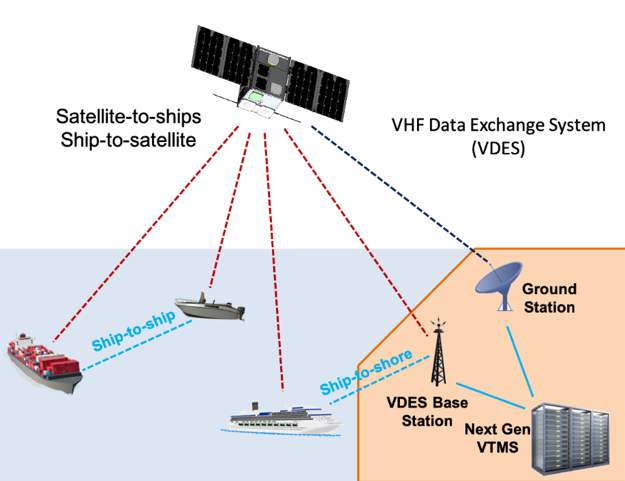VDES facilitates high bandwidth and real-time data transfer between shore and ships Credit: A*STAR Satellite Programme
Adding another dimension to navigational safety amid increasing traffic density in surrounding waters, the Maritime and Port Authority of Singapore (MPA) is investing in developing the VHF Data Exchange System (VDES) over the next few years.
Following the initial announcement at the International Safety@Sea Conference in June 2018 on the development of terrestrial VDES over the next three years, MPA also initiated a five-year project to conduct research on a satellite VDES in partnership with A*STAR I2R , NUS and local industry partners.
A satellite VDES network will complement terrestrial VDES to increase coverage on a worldwide basis. By providing global connectivity and a fast data transfer rate through the low cost Very High Frequency (VHF) radio frequency band, as well as allowing for two-way communications, the shipping community - including ship owners and port authorities - stand to benefit from a global VDES coverage.
MPA plans to deploy the VDES to pilot real-time maritime traffic and assets tracking. The better infrastructure to facilitate data exchange between shore and ships, could improve predictive analysis of navigational safety by tracking traffic hotspots and identifying collision risks, which can then be shared with the relevant parties.
MPA's investment in VDES reflects the critical importance of safety at sea for Singapore. VDES is expected to complement and replace AIS progressively over the next decade or so to enable two-way data exchange and unlock new applications and services through e-Navigation, improving safety and security at sea, and enhance operational efficiency of shipping and port services.
1A*STAR: Agency for Science, Technology and Research, I2R: Institute for Infocomm Research, IHPC: Institute of High Performance Computing. NUS: National University of Singapore

